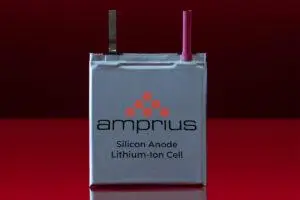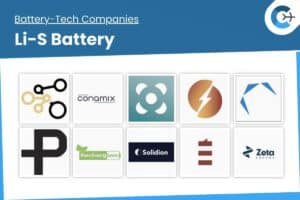Dry coating technology has the potential to transform the production of lithium-ion batteries, particularly for electric vehicles. This innovative manufacturing process eliminates the need for solvents used in traditional wet coating processes, offering significant environmental, economic and performance benefits.
Dry Coating Process (simplified)
The dry coating process involves several key steps that differentiate it from conventional methods:
- Dry Powder Mixing: Active materials, binders like fluoropolymer binders (such as Teflon), and conductive additives are mixed in a solvent-free environment. This eliminates the use of hazardous solvents like N-Methylpyrrolidone (NMP), reducing environmental impact and production complexities.
- Powder to Film Formation: The dry powder mixture is transformed into a uniform film through heat rolling or calendering. This step compacts the materials without the need for drying, which is a significant energy consumer in wet processes.
- Film to Current Collector Lamination: The dry film is then laminated onto current collector foils made of aluminum or copper. Special binders and conductive coatings ensure strong adhesion and enhanced conductivity between the film and the collector.

Source: Poyal Society of Chemistry Publication, DOI: 10.1039/D2EE03840D (Paper) Energy Environ. Sci., 2023, 16, 1620-1630
Advantages of Dry Coating Technology
- Elimination of Hazardous Solvents: By avoiding solvents like NMP, dry coating reduces the release of volatile organic compounds (VOCs), aligning with environmental regulations and promoting a safer working environment.
- Reduced Manufacturing Footprint: The process cuts down the required production floor space by up to 75%, contributing to more sustainable manufacturing practices.
- Energy Savings: Without the need for drying and solvent recovery, energy consumption is reduced by up to 47%. This makes the process more carbon-efficient.
- Cost Reduction: Fewer preparation steps and less equipment lower both capital and operational costs, potentially decreasing battery production costs by at least 10%.
- Higher Energy Density: Dry coating allows for higher compaction density of active materials, increasing the battery’s energy density by up to 20%.
- Improved Cell Performance: Batteries with dry-coated electrodes exhibit better discharge rates and lower internal resistance, especially at high loading weights.
Challenges in Implementing Dry Coating
The process of dry coating faces numerous obstacles, including:
- Adhesion Issues: Achieving strong adhesion between the dry film and current collectors can be problematic. Innovations like 3D electrode architectures are being explored to address this.
- Scalability: While the process is scalable, transitioning from laboratory to large-scale roll-to-roll production requires significant investment and technological adjustments.
- Mechanical Stability: Ensuring the mechanical stability of the electrodes without the binding effect of solvents is a technical hurdle that companies are working to overcome.
Key Players in Dry Coating Development
Several companies are leading the development of dry coating technology, including:
- AM Batteries (AMB): Recognized for its Powder to Electrode™ dry-coating method, AMB is a pioneer in dry battery-electrode technology.
- Maxwell Technologies: Now part of Tesla, Maxwell Technologies is a major player focusing on dry electrode processes.
- LiCAP Technologies: Partnered with Dürr Group, LiCAP provides engineering in activated dry electrode technology.
- Dürr Group: Expanded into dry coating technology, offering solutions for battery manufacturers.
- Henkel: Developing special binders and conductive coatings to enhance adhesion and conductivity in dry-coated electrodes.
- Zeon Corporation: Collaborating with AMB to develop unique binders for dry battery electrode production.
- Tesla: Aims to achieve mass production of fully dry-coated 4680 cells by the end of 2024. Despite these hurdles, Tesla continues to invest heavily in refining the technology.
- Sakuu: Kavian platform enables a completely dry process for 3D printing battery electrodes, eliminating the need for solvents and drying mechanisms
- Fraunhofer IWS: This German research institution is significantly contributing to dry battery electrode development.
Sources:
- https://www.chemours.com/en/industries-applications/electric-vehicles/ev-dry-binder-infographic
- https://volta.foundation/battery-bits/conductive-coatings-enabling-dry-battery-electrode-manufacturing
- https://www.electrichybridvehicletechnology.com/opinion/why-dry-coating-electrodes-is-the-future-of-the-electric-vehicle-battery-industry.html
- https://www.ffb.fraunhofer.de/en/press/ffb-blog/DryCoating.html
- https://source.benchmarkminerals.com/article/revolutionising-battery-production-how-dry-electrode-manufacturing-promises-to-cut-costs
- https://www.industryarc.com/Research/dry-battery-electrode-market-research-800594















